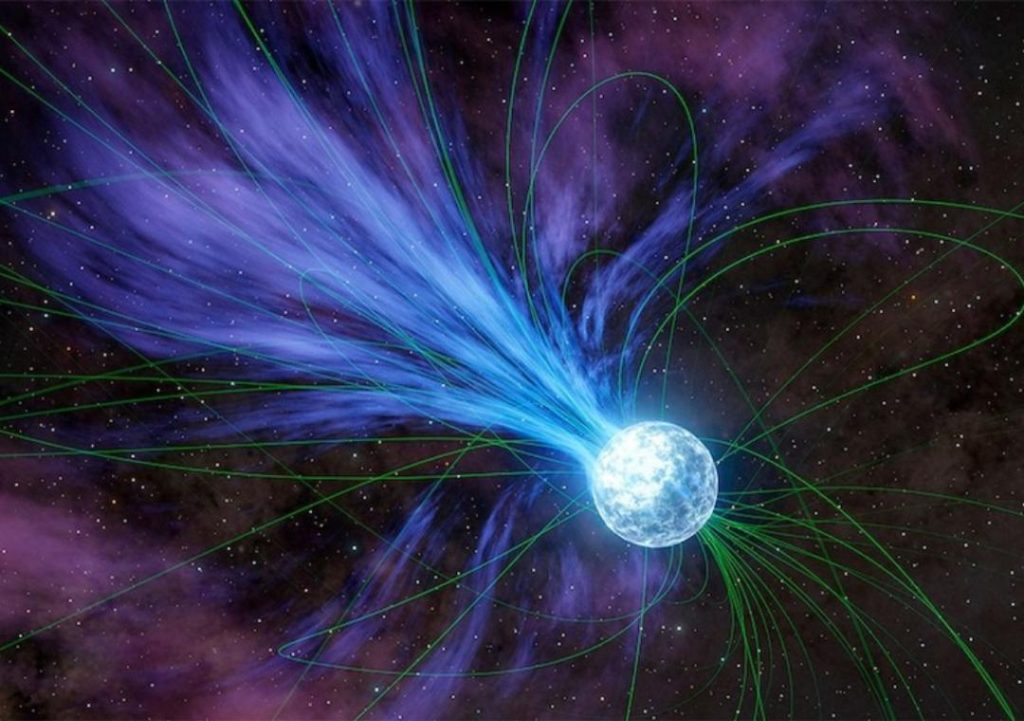
Gold & Platinum Created through Neutron Stars’ Explosions: Study
For centuries, the origin of precious metals like gold and platinum has been a topic of fascination and debate among scientists and philosophers alike. While we have long known that these metals are abundant in the Earth’s crust, the process by which they were formed has remained a mystery. However, a recent study led by Columbia University student Anirudh Patel has shed new light on this question, providing a groundbreaking answer to one of the most enduring puzzles in the field of astrophysics.
According to Patel’s study, magnetars or highly magnetized neutron stars played a crucial role in the creation of elements like gold and platinum in a cosmic event that occurred over 20 years ago. These powerful explosions, known as supernovae, released flares that contained the precious metals, which were then scattered throughout the galaxy.
To understand how this process works, it’s essential to first grasp the basics of magnetars. These are incredibly powerful objects that are formed when a massive star undergoes a supernova explosion. As the star collapses, its magnetic field is compressed and amplified, creating an incredibly powerful magnetar that is capable of emitting intense flares of energy.
Patel’s study suggests that these flares are responsible for creating the heavy elements that we see in the universe today, including gold and platinum. According to the researcher, the explosions happen approximately once per decade in the Milky Way and annually across the observable universe.
The study is based on observations of a magnetar that exploded in 2004. The explosion was detected by NASA’s Swift Gamma-Ray Burst Mission, which was launched in 2004 to study gamma-ray bursts and other high-energy events in the universe.
Using data from Swift and other telescopes, Patel and his team were able to study the explosion in detail, analyzing the energy released by the magnetar and the elements that were created as a result. The researchers found that the explosion was incredibly powerful, releasing an enormous amount of energy in the form of gamma rays and X-rays.
The team also analyzed the composition of the explosion, using data from the Swift Satellite’s X-ray Telescope and the Chandra X-ray Observatory. They found that the explosion contained a range of elements, including heavy metals like gold and platinum.
The study has significant implications for our understanding of the universe and the formation of precious metals. For centuries, scientists have searched for a natural source of gold and platinum, and this study provides a compelling explanation for how these elements were created.
In the past, scientists have proposed a number of theories about the origin of gold and platinum, including the idea that these elements were formed through the collision of neutron stars. However, this study provides the first direct evidence for this theory, offering a groundbreaking answer to one of the most enduring puzzles in the field of astrophysics.
The study’s findings also have significant implications for our understanding of the universe and the formation of heavy elements. According to Patel, the explosions that create magnetars are incredibly rare, occurring only once per decade in the Milky Way. However, across the observable universe, these explosions are much more common, occurring annually.
The study’s findings also have significant implications for our understanding of the universe and the formation of heavy elements. According to Patel, the explosions that create magnetars are incredibly rare, occurring only once per decade in the Milky Way. However, across the observable universe, these explosions are much more common, occurring annually.
The study’s findings also have significant implications for our understanding of the universe and the formation of heavy elements. According to Patel, the explosions that create magnetars are incredibly rare, occurring only once per decade in the Milky Way. However, across the observable universe, these explosions are much more common, occurring annually.
In conclusion, Patel’s study provides a groundbreaking answer to one of the most enduring puzzles in the field of astrophysics. The discovery of magnetars and their role in the creation of heavy elements like gold and platinum has significant implications for our understanding of the universe and the formation of precious metals. As we continue to study the universe and the processes that shape it, we may uncover even more secrets about the origins of these precious metals.
Source:






